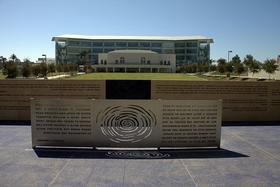When parents send their children to school in the morning, most assume their kids will not be exposed to drugs, alcohol or gang activity on campus. They believe schools are a relatively safe environment, dedicated to the task of teaching children the basic academic disciplines and preparing them for productive, prosperous adulthood. Unfortunately, new findings suggest that alcohol and drug use, as well as gang activity, may be more prevalent in public schools than parents realize.
Concerning Numbers from Â鶹ąű¶ł´«Ă˝ Survey
A recent report by the (CASA) showed potentially disturbing findings. According to the study, as many as one in four middle and high school students have reported the presence of both drugs and gangs on their campuses. An analysis in the deduced that approximately 5.7 million students across the country are also more likely to drink, smoke and use drugs than students at private and parochial schools, where drugs and gangs are virtually non-existent.
Former U.S. Secretary of Health, Education and Welfare, Joseph Califano Jr., is responsible for the study. Califano told that the prevalence of drugs and gang activity is a cancer in public schools. Califano adds, "It is just outrageous. It is nothing less than state-sanctioned child abuse to require parents to send their kids to schools where drugs and gangs are present."
Califano told the Los Angeles Times that the most disturbing statistic in the study was that one in three middle school students said that drugs were used or sold in their schools. That number is a 39% increase from findings the previous year. While Califano could not cite a specific reason for the increase, he did tell , "Wherever there are gangs, there are drugs; it's pretty safe to say."
More Alarming Findings
In addition to the data cited above, the recent study also revealed the following about teens who attend a school where drugs and gang activity are present:
- They are five times more likely to use marijuana.
- They are three times likelier to drink alcohol.
- They are 12 times more apt to smoke.
- They are almost five times more likely to have a friend that has used illegal drugs like ecstasy, acid or cocaine.
The study also showed that schools with gangs were almost twice as likely to report that drugs were available and used at school. Califano told CNN, "We have to get the gangs out. We cannot improve education in public schools where there are gangs and drugs."
This TEDTalk outlines the problems with drugs in our schools.
The Importance of Parental Involvement
In this study, the CASA also looked at Family Ties, which is the bond between parents and teens, to find out how significant this relationship was in combating the use of cigarettes, alcohol and illegal drugs. The study revealed that teens in families with weak family ties were:
- Four times likelier to use tobacco or try marijuana
- Nearly three times likelier to use alcohol
- Twice as likely to have a friend abusing prescription drugs or using illegal drugs
What Can Parents Do?
Kathleen Ferrigno, CASA's director of marketing, said on CASA's website, "This year's survey underscores how critical it is for parents to forge close family ties with their children and really know their children's friends. In today's world, a parent has no greater tool to keep their children drug-free than communication." Ferrigno also told WebMD that simply knowing your children's friends and sitting down to dinner together every night can have a huge impact.
Califano agreed that parents are their children's greatest advocates. He told CNN, "Parents really need to raise hell. If there were asbestos, they wouldn't send their kids to school until every particle of dust were cleaned up. If they had a job and there were gangs at work, they wouldn't go."
Dr. Janet Williams, chair of the American Academy of Pediatrics Committee on Substance Abuse also gave her input about parental involvement to CNN. Dr. Williams said that parental involvement is crucial for the academic success of teens, particularly those in environments where risky behavior is high. She recommends that parents stay involved in their teens' lives, including supporting their passions and asking questions when behavior or attitude changes raise a red flag.
"Educational standards are higher when parents are involved," Dr. Williams said.
This video reviews the impact of substance use on the developing brain with particular focus on alcohol and marijuana. It also reviews the use of validated screening tools for adolescent substance use and presents a brief motivational intervention strategy targeted at reducing substance use by high-risk adolescents.
While the statistics may be somewhat alarming to parents, the good news is that there are steps they can take to reduce risks in their children. Involvement, regular conversation, and strong parental support go a long way in raising kids that avoid potentially risky behaviors and achieve academic success.
Questions? Contact us on Facebook. @publicschoolreview















